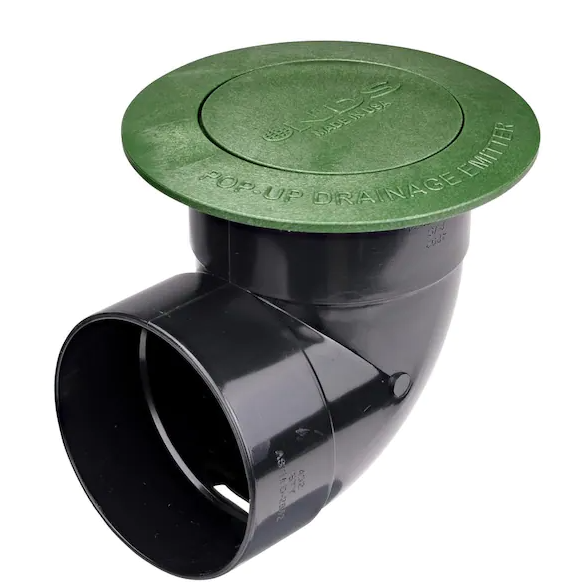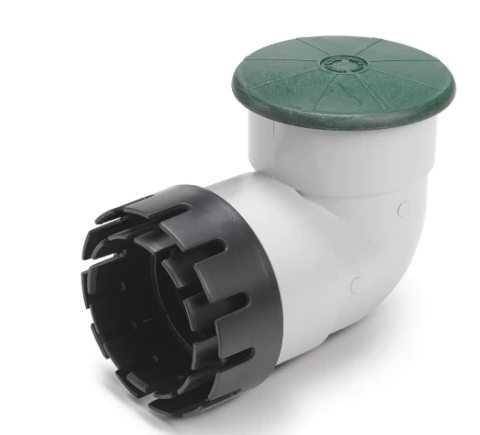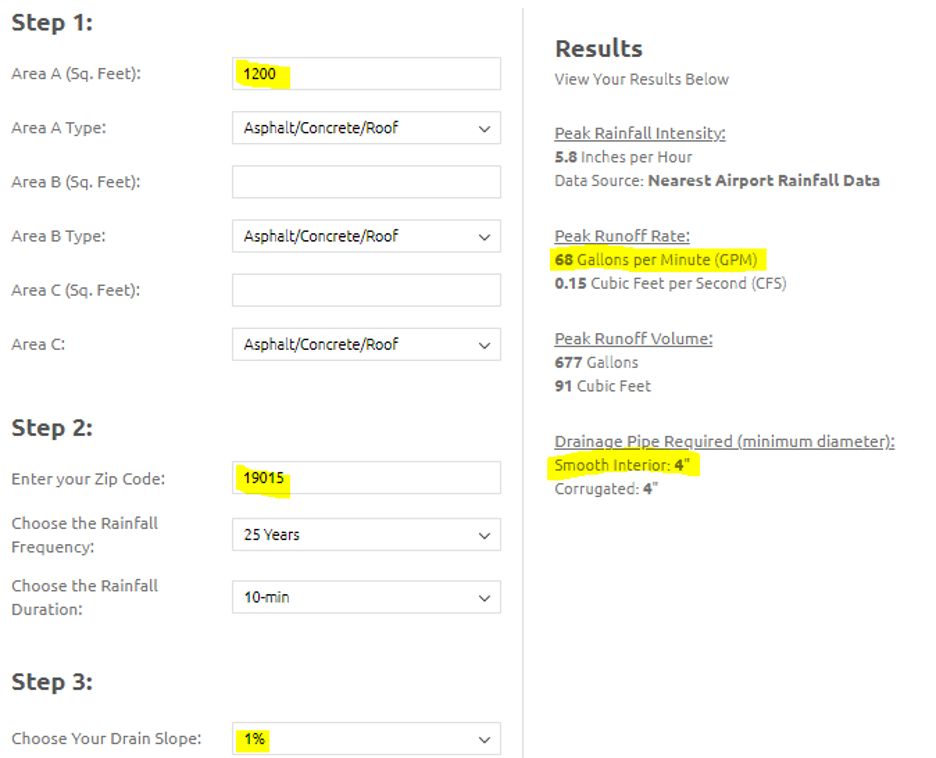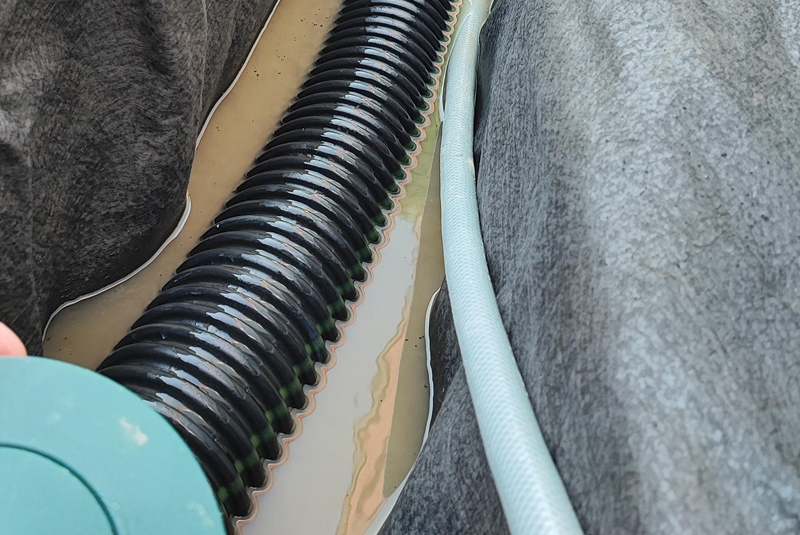When it comes to discharging a drainage system, no one part is more accepted and widely used than a pop-up emitter. As one of the country’s top selling wholesale distributors, Central Turf & Irrigation Supply sees pop up emitters as one of the most important drainage items at Central and the “set it and forget it” approach of one emitter per system may or may not be the correct approach to completing your drainage system.


What a pop-up emitter does is:
- Create a discharge that sits flush with the lawn and creates an opportunity for water to leave the system without creating an obstruction for mowers and foot traffic.
- Once the water is captured and moved through the pipe, the water will steadily move up the elbow and leave the system through a gate that only will rise when enough pressure is created by the flow. Once the rain event is complete, the gate settles back down where it will not be a hazard in the lawn.
What about the water that remains in the pipe? That water is allowed to slowly weep out of a hole in the bottom of the elbow and prevents standing water from remaining in the pipe.
The best practice is to install 6 to 12 inches of gravel beneath the emitter to allow for the water to exit the pipe more freely and prevent any standing water under the emitter. An important note to consider is the difference between the box store versions of this product. Our wholesale version of the emitter is spring loaded which allows for the gate to easily move up and down easily in rain events and keep the gate in place when not running. This also prevents the gate from being pulled up by a commercial mower. Box store versions of this product are not spring loaded and often turn into lawn mower food after one pass!
A common complaint from contractors about emitters is that they are blown off the fitting when the rain is very heavy. To rectify this issue, we must go back to calculating the flow out of the pipe and to understand that the emitter can only handle so many gallons per minute before it runs into issues. As a rule, a 4-inch pop up can only handle 40 gallons per minute being discharged through a system and a 6 inch can only handle 88 gallons per minute. This means that a 4-inch pipe moving more than 40 gallons per minute will need more than one pop up to effectively discharge a system.
To illustrate this, we can refer to the NDS drainage calculator. Let’s use a 1200-foot roof as the example in suburban Philadelphia. When we plug in 1200 square feet of impervious roof and add a zip code of 19015 with 1% slope, we see that this can be handled by 4-inch pipe discharging 68 gallons per minute.

We know that the 4-inch pipe can handle the flow, but if we plan on using a 4-inch pop-up emitter at the end of the pipe, it is well over the 40 gallons per minute the pop-up can handle. So, what is the solution? We can add a second pop-up to this system by adding a Wye in the pipe to split the flow, or we can add a second capture point and piping to accommodate the flow rate. Using the Wye will be the most cost-effective way to accomplish this and will prevent the separation of the emitter and the fitting due to excess discharge.
Finally,
Central Irrigation is your source for all your drainage needs. We are fully stocked with PVC, Dual Wall and corrugated pipe. We also carry catch basins, pop-up emitters, channel drains and fittings to make sure your project is complete. Regardless of scope and size, Central is your partner in drainage and is always here to help!

